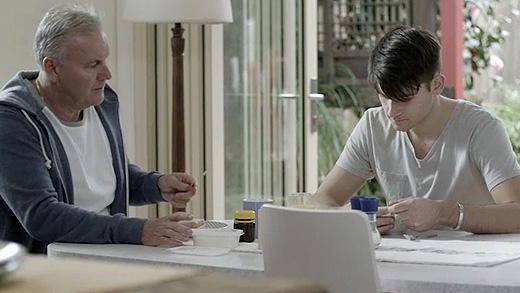In modern society, one of the pressing problems is the behavior of adolescents. Not every one of them realizes what their actions can cause serious and difficult to fix consequences. 
Social risks
To begin with, the very concept of an offense should be considered. It represents the guilty behavior of the subject, contrary to regulatory requirements, causing harm to others and entails legal liability. Offenses fall into two categories: misconduct and crime. The former may be disciplinary, civil, administrative. Crimes are acts that are punishable by the Criminal Code. All offenses constitute a social danger to one degree or another.
A responsibility
It varies depending on the category of offense. So, there is:
- Administrative responsibility. It applies to the acts provided for in the Code of Administrative Offenses. Such misconduct includes violations of traffic rules, fire safety rules, etc. The subject can be brought to administrative responsibility from the age of 16. The penalty is a fine, correctional labor, warning.
- Disciplinary responsibility. It occurs when committing violations in the field of labor law. Such misconduct may be absenteeism, being late, etc.
- Civil liability. It is provided for when committing acts involving property damage. As sanctions apply compensation for harm.
- Criminal liability. It occurs when committing acts that violate the provisions of the Criminal Code. For some crimes, responsibility for subjects comes from 14 liters.
The importance of timely crisis management
Preventive work with minors is one of the effective methods of combating youth crime. It includes various activities. An educational institution plays a special role in the issue of crime prevention. Early detection of children who are prone to violation of moral and legal norms can reduce social risks. Educational institution should create conditions for the normal development of children. Pedagogical activity consists not only in direct learning, but also in identifying the individual characteristics of each child, in identifying and analyzing the causes of moral deformation of a person. The educational institution also has an obligation to timely identify crisis situations of a typical nature, in which this or that risk group falls. Undoubtedly, parents should be involved in this process. 
Behavior classification
There are several stages that children go through that are difficult for adults to cope with:
- Unapproved actions. They are associated with pranks, disobedience, stubbornness, mischief, injustice.
- Reprimanded deeds. Such actions cause one degree or another of condemnation from parents, teachers, and other people. Such actions include irregular violation of discipline, episodic cases of audacity, pugnacity, dishonesty, rudeness.
- Deviant behavior. It implies moral negative actions that have taken on a familiar or systematic character. For example, they include hypocrisy, deceit, theft, aggressiveness, conflict, pretense, selfishness, etc.
- Criminal acts.The rudiments of destructive and criminal behavior are found in them. Such actions include intentional episodic violations of the requirements and norms governing social relations, extortion, beatings, drinking alcohol, hooliganism, malicious non-observance of discipline, etc.
- Criminal behavior. It manifests itself in the commission of various illegal acts.
Signs of deviations
Children that are difficult for adults to deal with have a number of distinguishing features. Among these signs, it should be noted:
1. Evasion from training as a result of:
- poor performance in most disciplines;
- lags in the level of intellectual development;
- lack of cognitive interest;
- orientation to other types of activities.
2. Low social and labor activity. It manifests itself in:
- refusal to fulfill orders;
- neglect of class affairs, public property and its corruption;
- demonstrative evasion of participation in labor activity.
3. Negative actions:
- craving for gambling;
- smoking and drinking alcohol;
- use of drugs and psychotropic drugs;
- unhealthy acts of a sexual nature.
4. A negative assessment of reality.
5. Increased criticality towards adults and educators. It manifests itself in:
- rudeness;
- pugnacity;
- absenteeism;
- extortion;
- beating the younger, weak;
- cruelty to animals;
- unmotivated acts;
- lack of discipline in the classroom.

Moreover, such children may have a different attitude towards the attempts of adults to educate them. It can be indifferent, aggressive, skeptical, negative.
Background
Prevention of deviant behavior will only be effective when an analysis of the causes of personality deformation is preliminarily performed. The main prerequisites that cause such disruptions in development include:
- Adverse education conditions. Parents are the most effective model for the child. If they are systematically drunk, cruel, and scandalous, then children mainly follow their example.
- Lack of attention and love from parents. A fashionably dressed, well-groomed, well-fed child can be very lonely inwardly. He becomes psychologically neglected because nobody cares about his experiences, interests, moods. Such children are usually drawn to peers and adults outside the family. To some extent, this communication compensates for his lack of parents. But if it acquires unhealthy traits, then it begins to negatively affect the moral condition of the child.
- Excessive custody. Some parents, worrying that their children will make mistakes, all strive to decide for them, not allowing them to choose and live according to their own convictions. As a result, infantility, personal failure, and child self-sustainability develop.
- Excessive satisfaction of all requests. In a family where the child is not denied anything, they are relieved of household duties, they fulfill any whims, not just a lazy person, but a consumer can grow up. Such children will strive for new pleasures and benefits. If the habit of self-restraint is not developed to a reasonable extent, they often go to crime. At the same time, acts are committed solely from consumer motives.
- Authoritarianism of parents and excessive exactingness. Excessive severity of adults, the use of a variety of prohibitions and restrictions, punishments that offend and humiliate children, the desire to subordinate to their own will, imposing ready-made decisions and their opinions, command tone, categorical judgments, the use of repressive and coercive measures, including physical ones, negatively affect on the atmosphere in the family. In such cases, children often commit crimes.

Problem Solving Options
Prevention of deviant behavior is a key task for adults - parents and educators. An educational institution should become a place where the opportunities and initiative of the child will be manifested. Preventive work at school involves the formation of conditions that do not provoke deviant actions. An educational institution, on the contrary, should provide and expand a safe space for children in which it will be calm and interesting. The most effective in this sense are educational institutions with a developed system of extracurricular activities, which takes into account the needs of different ages. Existing types of prevention (leisure activities, conversations, sports, technical, art circles, etc.) act as a powerful tool that allows you to painlessly affect children, preventing the development of negative tendencies. In the educational institution, among other things, a system of rules and norms should be formed, since without them it is impossible to effectively solve problems of not only pedagogical, but also educational nature. All types of prevention should focus on:
- Creating a lifestyle in an educational institution.
- Helping children to establish the relationship between personal freedom and responsibility.
- Support for each child in resolving disputes by civilized methods.
- Education of legal culture skills.
Carrying out preventive measures, the main thing is not to miss the time. It is at an early stage, according to A. G. Avanesov, that success can be achieved more quickly. This is due to the fact that at this stage the personality has not yet formed stable habits and attitudes. If early preventive work is insufficient, then it can be supplemented by measures of a different level, since there is a certain margin of time for this.
Main tasks
The organization of preventive work is necessary for:
- Improving the conditions of upbringing and life of children, when the situation poses a threat to their normal development.
- Suppression and identification of sources of antisocial impact.
- Influences on children who allow deviations in their actions, so that unlawful and immoral habits and views could not gain a foothold in their minds.

Key areas
Carrying out preventive work is focused on:
- Identification of adverse conditions of education and life before they are reflected in actions, the process of forming the views of specific children.
- Detection and elimination of sources of negative influence on adolescents that can persuade them to antisocial actions. This direction provides:
I. The application of measures aimed at improving the adverse conditions of the home environment. In this case, preventive work with the family is carried out.
II. Removing children from adverse situations.
III. The application of measures established by law to entities involving minors in antisocial activities.
- The provision of corrective and restraining effects on children with deviant acts.
At the same time, children who have not yet gained antisocial views and who commit minor offenses may be affected. Social and preventive work is primarily aimed at preventing the strengthening of antisocial habits and attitudes, and preventing the child from realizing the child’s illegal and immoral position in crime.
Specific measures
Preventive work involves not only helping a child who is in adverse conditions of education and living. In the framework of this activity, removal from the negative environment and placement in an orphanage, boarding school and other specialized institutions are carried out. In addition, individual preventive work can be carried out.It involves registration in the IDN, the appointment of a public educator, boss, etc. For children, from whom the inspectors form a conditional risk group, measures of civil law, administrative, public educational nature may also be applied.
Structure of activities
Prevention of offenses includes:
- Performing comprehensive medical, psychological, pedagogical diagnostics to determine the prerequisites for the occurrence of difficulties in training, communication, etc.
- The choice of the optimal educational method for each child and measures of psychocorrectional influence on the personality.
- Personal assistance.
- Advisory support to parents, their substitutes.
- Practical and methodological assistance to specialists engaged in rehabilitation and correctional activities.

Based on this, the following aspects of preventive work can be distinguished:
- Diagnostic.
- Psychocorrectional.
- Wellness.
- Consulting.
- Scientific and methodical.
- Social and analytical.
- Educational.
- Educational
- Public law.
The last two directions need special emphasis.
Educational aspect
Preventive work with adolescents in this area involves the education of children who have difficulty in mastering programs related to poor living conditions and characteristics of psychophysical development, according to GEF. In the process of this activity, an appropriate environment is created for student-centered learning. It provides a varied nature of teaching with the formulation of tasks of a correctional-developing type. The aim of the activity is to restore the ability to learn and increase the level of education.
Social aspect
Preventive work in the framework of this aspect includes helping children with their adaptation in the environment, in the work team, with career guidance, and getting a specialty. In addition, it provides for the protection of the rights and interests of each child. In the framework of public law activities, children and their parents are advised on legal issues, preventive measures are taken to prevent homelessness, vagrancy, and suicide attempts.
Diagnostics
Prevention of offenses is accompanied by an analysis of crisis situations and reactions of children to them. Diagnostic activity involves:
- The study of the degree of education and level of development.
- Identification of children in the first grade with deviations in behavior and timely correction.
- Observation of students in different situations.
- Determining the position of each child in the home environment and in the classroom.
- Performing a sociometric analysis to establish reference categories.
- Determination of the level of self-control, self-esteem, self-education skills.
- Detection of deficiencies and positive personality traits.
- Finding and researching inclinations and interests.
- Studying the characteristics of the temperament and character of each child.
- Monitoring children's health.
- Establishment of motives for communication and behavior of each child.
- Monitoring the interaction of children and parents (persons replacing them).
Correction
It involves an individual approach. Activities include:
- Consulting on problems of correction of deficiencies identified during diagnosis.
- The study of personal characteristics, the degree of education of children. On the basis of the studied, specific tasks and methods of subsequent pedagogical influence are determined.
- Regularly keeping a diary of observations of communication, behavior, and the situation of each child in the team.
- Classes of the class teacher, psychologist, school administration with children requiring correction.
- Formation of conditions for the realization of creative potential, support in organizing leisure activities.
- Involving students in social activities.
- Providing unobtrusive control on the part of the teacher, class teacher, social educator, psychologist, director of the educational institution for children's actions in the classroom and after school hours.
- Attracting to reading fiction.
- The holding of trainings on communication, psychological unloading, conversations, meetings with interesting personalities.

Interaction with parents
Preventive work should be carried out jointly with adults and include:
- Study of the situation of the child at home.
- Speech by teachers at meetings with parents.
- Visiting families.
- Meetings with employees of IDN, investigative bodies, prosecutors.
- Attracting specialists to consult parents.
- Conducting thematic meetings, creative meetings.
Conclusion
Many schools have months of prevention. As a rule, law enforcement officers, psychologists and other specialists participate in them. As part of this work, discussions are held on the SDA, on duties and rights, health, etc. The planning of these months allows all participants in the pedagogical and educational process to be involved. This, in turn, has a positive effect on the current situation. The teaching staff of the educational institution must make every effort to conduct effective preventive work.
A key role in the interaction between the institution and parents belongs to class teachers. Their activities will depend on how well the family understands the policies pursued by the educational institution as part of preventive work. Class leaders, in turn, must understand the importance of their function. They provide the organization of lectures, discussions, meetings with experts, carry out observation, analysis, plan preventive work in the classroom. Educators should establish interaction with parents. This is carried out not only in the framework of meetings, but also in the form of individual work with each family. This, in particular, includes counseling for parents and children at home.






